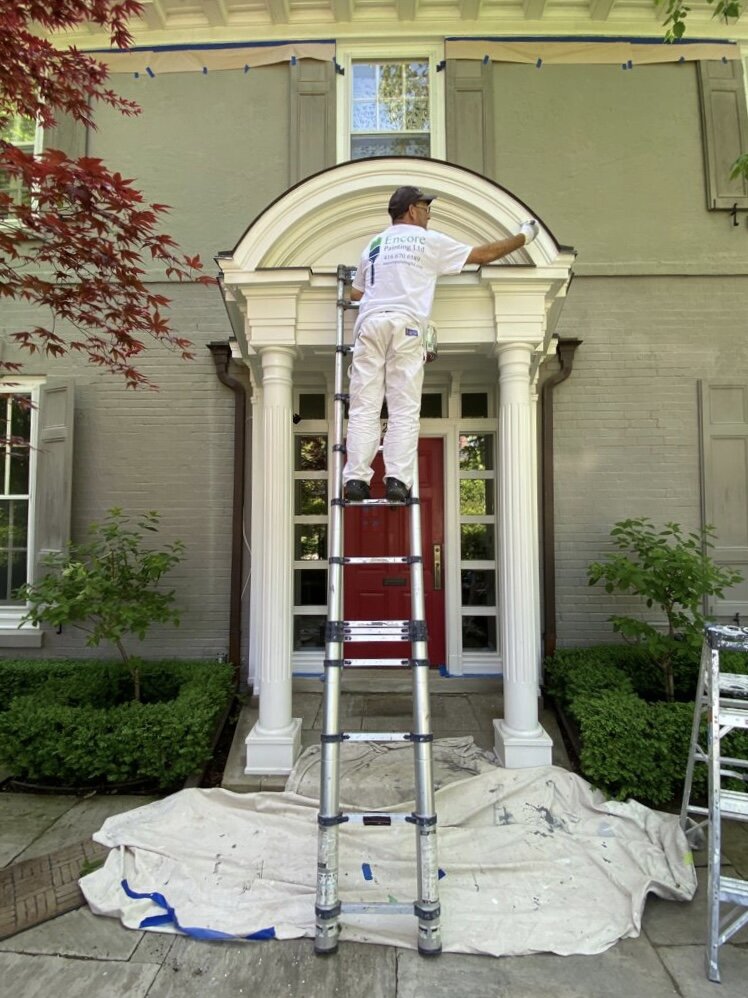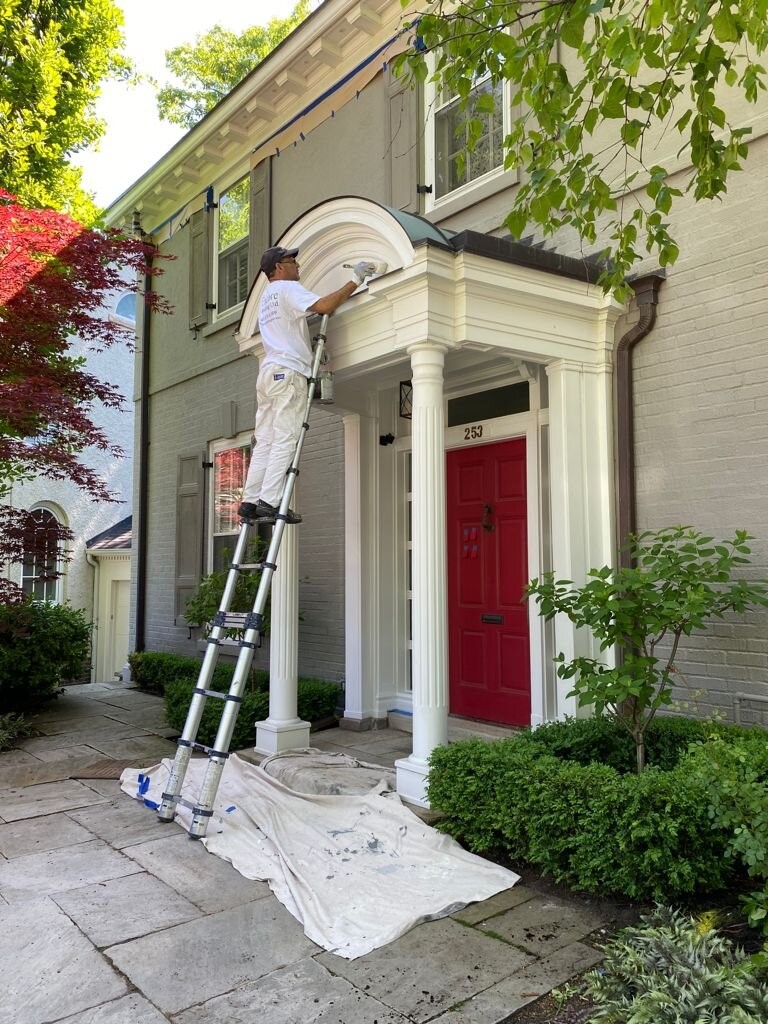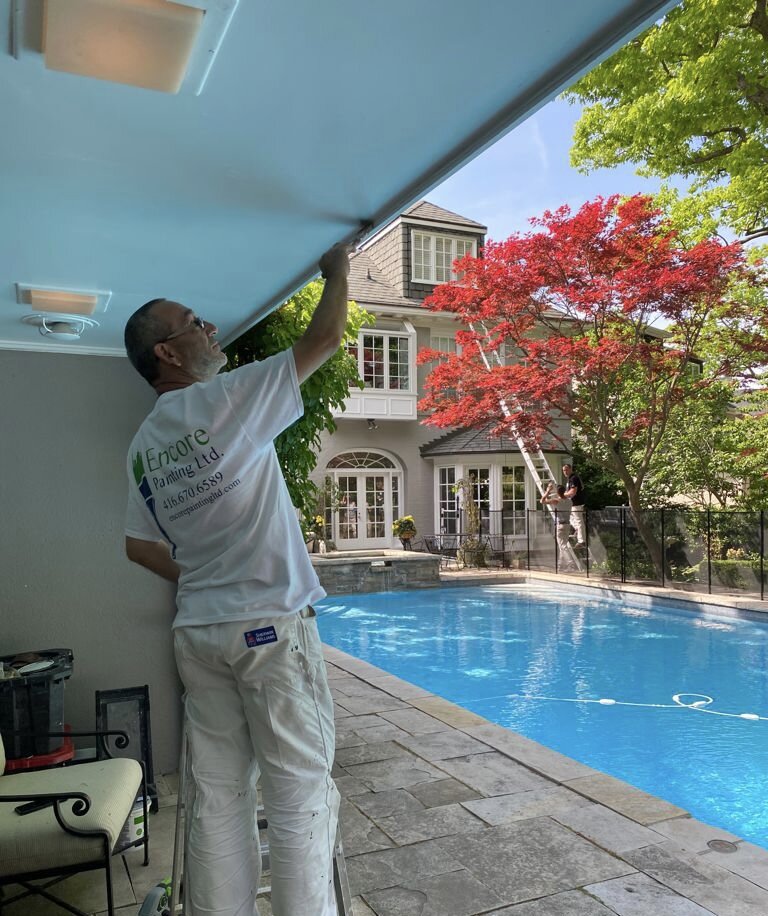Any time a homeowner decides to take on an exterior painting project, it is a big decision. Your home is an extension of yourself, and a new paint job can transform it. That’s why selecting the right colours and shades is essential. But in addition to choosing what colours best suit the personality of a home, many people overlook how it should be painted. When deciding whether to use spray or brush when painting the exterior of your home, there are many factors to consider:

What is the scale of the project?
Are you painting one large surface, or is there a lot of small detail work?
What is the timeline for the project?
As experts in both techniques, let Encore Painting shed light on these differences and help you make the best decision for your home painting project.
The amount of paint to use with brushing vs. spraying the paint
Though there is no hard and fast rule for how much paint to use for a project – when using a brush – it is estimated by manufacturers that one gallon of exterior acrylic-latex paint will cover about 400 square feet. However, there are a few variables to consider. First, this estimate is assuming the surface is clean and primed. A dirty surface, or one that is very poros, will take more paint to fully cover. It might not seem like it would make a big difference, but with a large enough project, the extra paint used can be significant. As well, wasting paint due to dripping, or applying too thick of a coat, can also throw off this estimate.
As for spraying the paint (and due to the nature of the process), it can use up to three times more paint than brushing. This is because the sprayer atomizes the paint, inevitably causing some of the paint to blow away. However, there are things you can do to minimize wasted paint. First, avoid painting on windy days. Though this may seem obvious, even a slight breeze can blow away paint, and with a large enough project, this seemingly small amount of lost paint can really add up. Second, stand close to the surface you are painting. The further away you stand, the higher the likelihood that paint will blow away. But don’t stand too close! Holding the sprayer too close to the surface can not only cause the paint to drip, but also increases the amount of blowback. Be sure to protect yourself with tight fitting goggles and a respirator, as well as covering your head and clothes. Finally, you can pump the remaining paint in the hose back into the paint container rather than spraying it. Every little bit of paint saved adds up, and doing this is also more eco friendly.
Is it better to brush or spray exterior paint?

Though one is not inherently better than the other, spraying and brushing paint are very different techniques. As a result, there are pros and cons to each – and one will likely be better suited for your project. For exterior spray paint, the first thing to consider is the setup time. Because spraying paint covers such a large surface, areas that you don’t want painted, such as windows or doors, must be covered before starting. Also, excess paint can be taken by the wind, so this can even mean covering adjacent driveways and sidewalks. However, once everything is taped and covered up, spraying paint is much faster than brushing. Spraying also gets into all the nooks and crannies of textures like brick and concrete, which can take several passes with a brush. So if you don’t mind the setup time, or if you have one large, featureless surface to paint, spraying would be a great option for your project.
For those working with a smaller surface, or one with a lot of small detail work, brushing is the way to go. As we talked about, brushing uses less paint, and unlike spraying, all you need to do to set up is pour the paint into a tray and put a drop cloth under the area being painted. Brushing gives you the control to work along fine lines and in more precise areas, and if your project involves multiple colours, like adding accents to window frames, brushing gives you the freedom to do this, rather than having to uncover and recover areas depending on the colour you’re using. But if you’re planning on painting a large area, exterior paint brushing can take much longer than spraying.
The best way to paint the exterior or a house

Because every project is different, and each painting technique has its strengths and weaknesses, there is no “best” way to paint the exterior of a house, but to recap, here are some general rules to follow. If you are painting a large surface without many features, spraying the paint can be an incredibly efficient way to complete the project. But setting up can be time consuming, and you will end up using more paint, which is more expensive. If the project is smaller, has a lot of fine detail work, or uses multiple colours, go for brushing! The set up is easy and you will use a lot less paint, saving money. The only downside is that the painting itself is going to take longer than if you were spraying the paint. With this in mind, choose the technique that suits your needs and begin the fun of transforming the exterior of your home today.
Be sure to check out our other painting blogs for more painting tips, and if you’d like to leave your house painting to the pros, don’t hesitate to get a free estimate today.